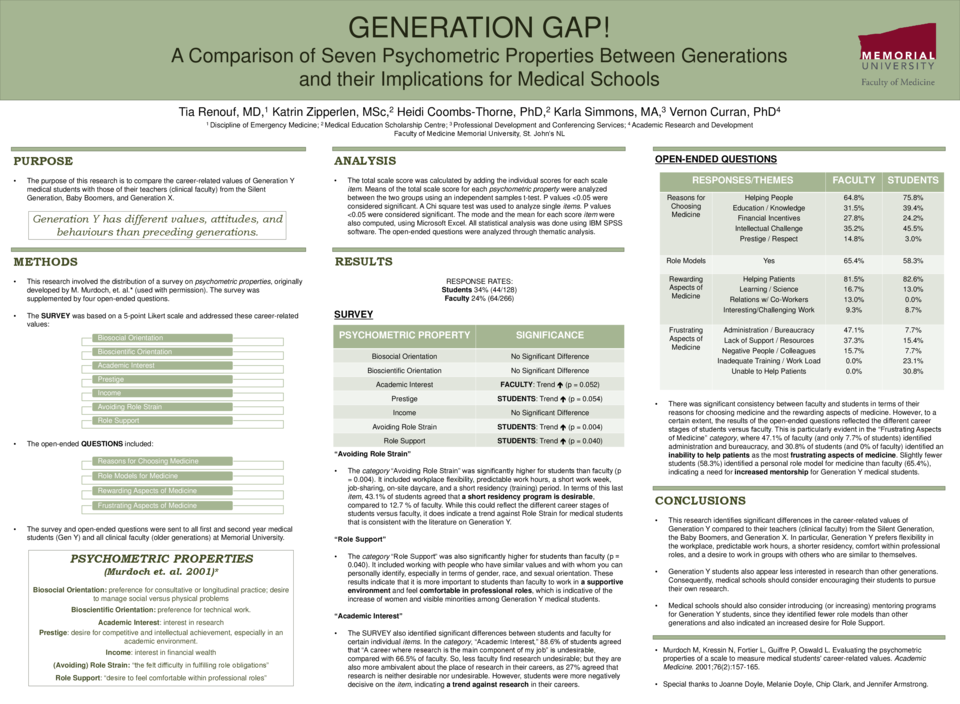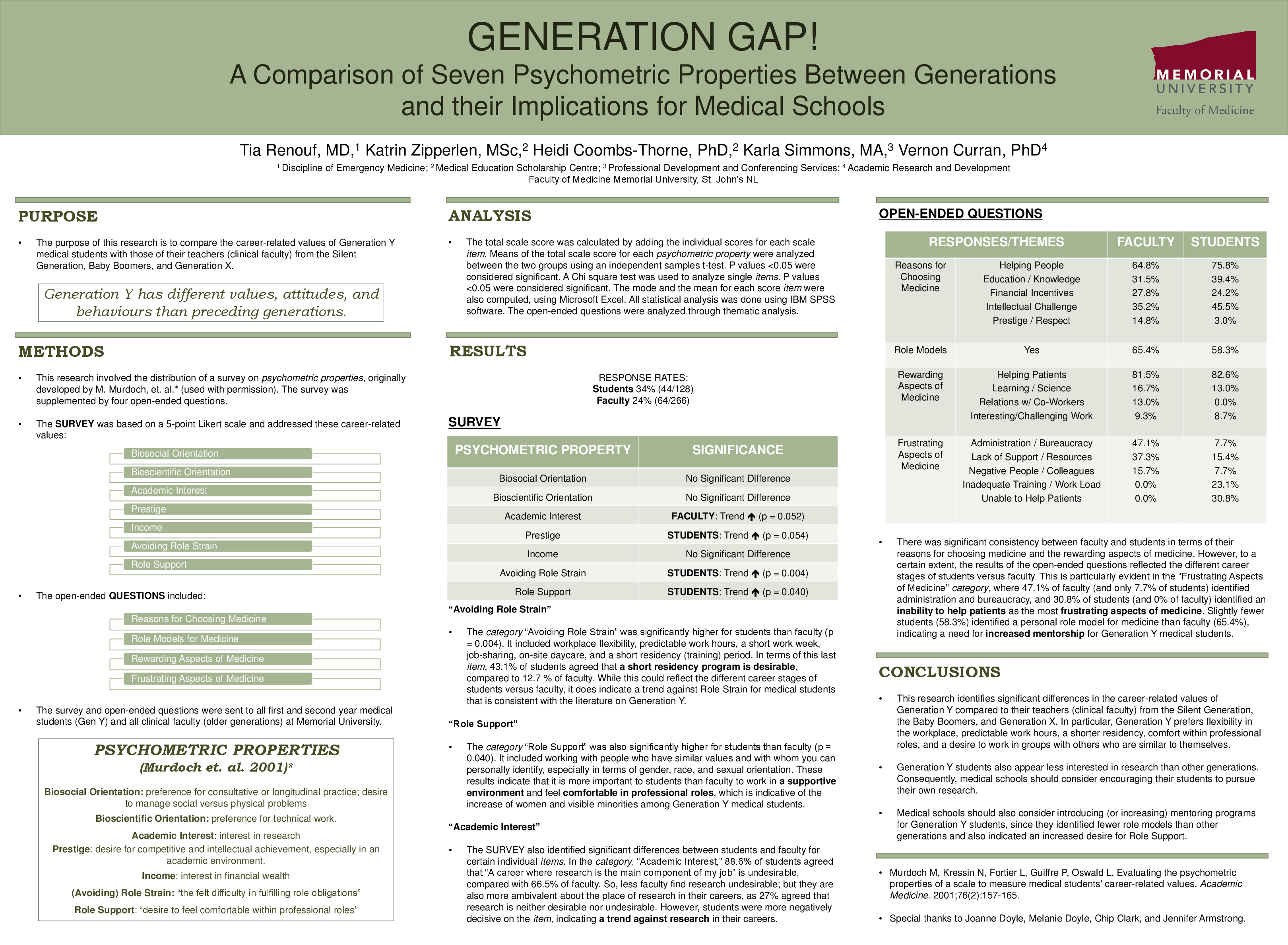Abstract
Presented at: MESC Forum; St. John’s, NL, May 2014.
Purpose: This research compares the career-related values of Generation Y medical students with those of their teachers (clinical faculty) from the Silent Generation, Baby Boomers, and Generation X.
Methods: We distributed a survey on psychometric properties that was originally developed by M. Murdoch et al. (used with permission). The survey was sent to all clinical faculty and all first and second year medical students at Memorial University. Survey questions were based on 5-point Likert scales and addressed these career-related values: Biosocial Orientation; Bioscientific Orientation; Academic Interest; Prestige; Income; Avoiding Role Strain; and Role Support. The Murdoch survey was and supplemented by four open-ended questions that focused on: 1) reasons for choosing medicine; 2) role models; 3) rewarding aspects of medicine; and, 4) frustrating aspects of medicine.
Results: Two career-related values were significantly higher for students than for faculty – Avoiding Role Strain (p = 0.004), which included workplace flexibility, predictable work hours, a short work week, job-sharing, on-site daycare, and a short residency period; and Role Support (p = 0.040), which included working with people who have similar values and with whom you can personally identify, especially in terms of gender, race, and sexual orientation. The Academic Interest category was significantly higher for faculty than for students (p = 0.052). In terms of the open-ended questions, there was consistency between students and faculty in terms of their reasons for choosing medicine and the rewarding aspects of medicine. However, to a certain extent, the results reflected the different career stages of students versus faculty – for example, 47.1% of faculty and 7.7% of students identified administration and bureaucracy as a frustrating aspect of medicine while 30.8% of students and 0% of faculty identified an inability to help patients as the most frustrating aspect of medicine. Slightly fewer students (58.3%) identified a personal role model than faculty (65.4%).
Conclusions: This research identifies significant differences in the career-related values of Generation Y medical students compared to faculty. Generation Y students prefer shorter residency periods, stable lifestyles, comfort within professional roles, and the desire to work in groups with others similar to themselves. They are less interested than faculty in academic research. And since Generation Y students identified fewer role models than faculty, medical schools could consider introducing (or increasing) mentoring programs for Generation Y students.






